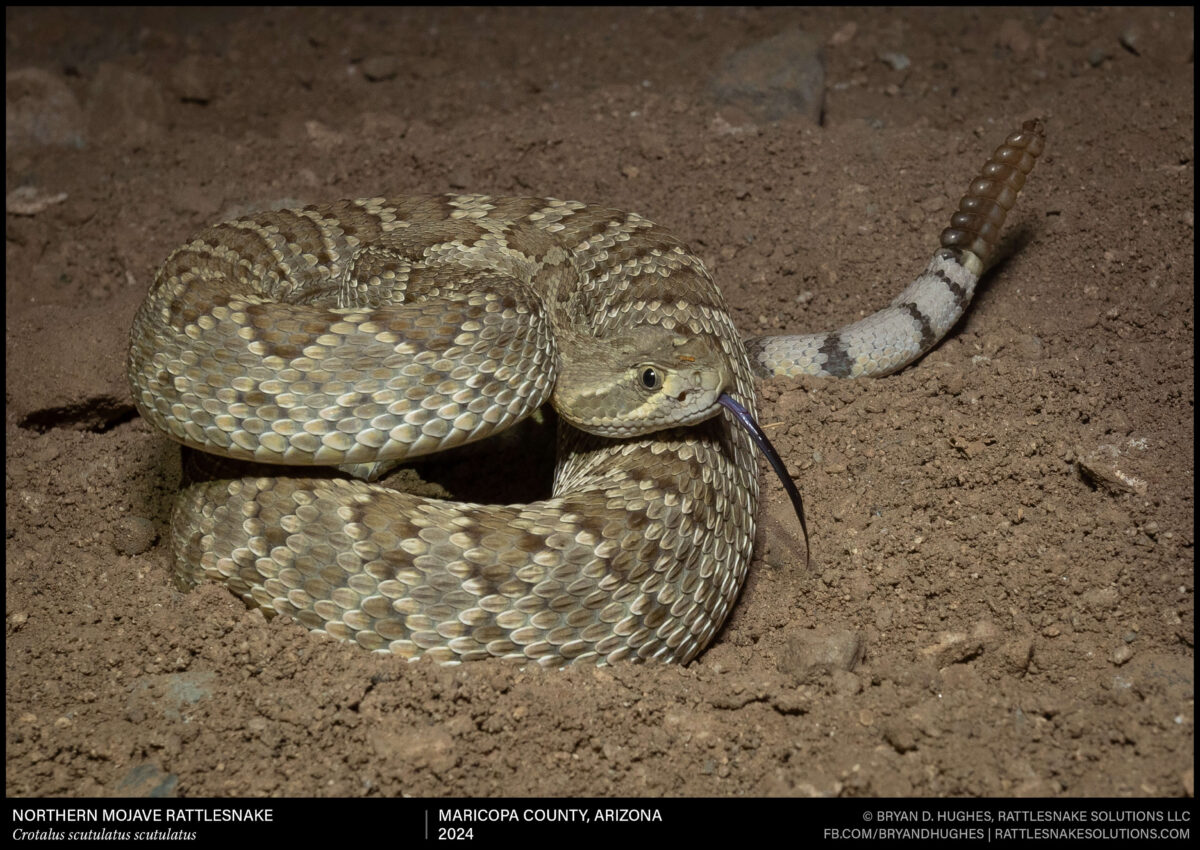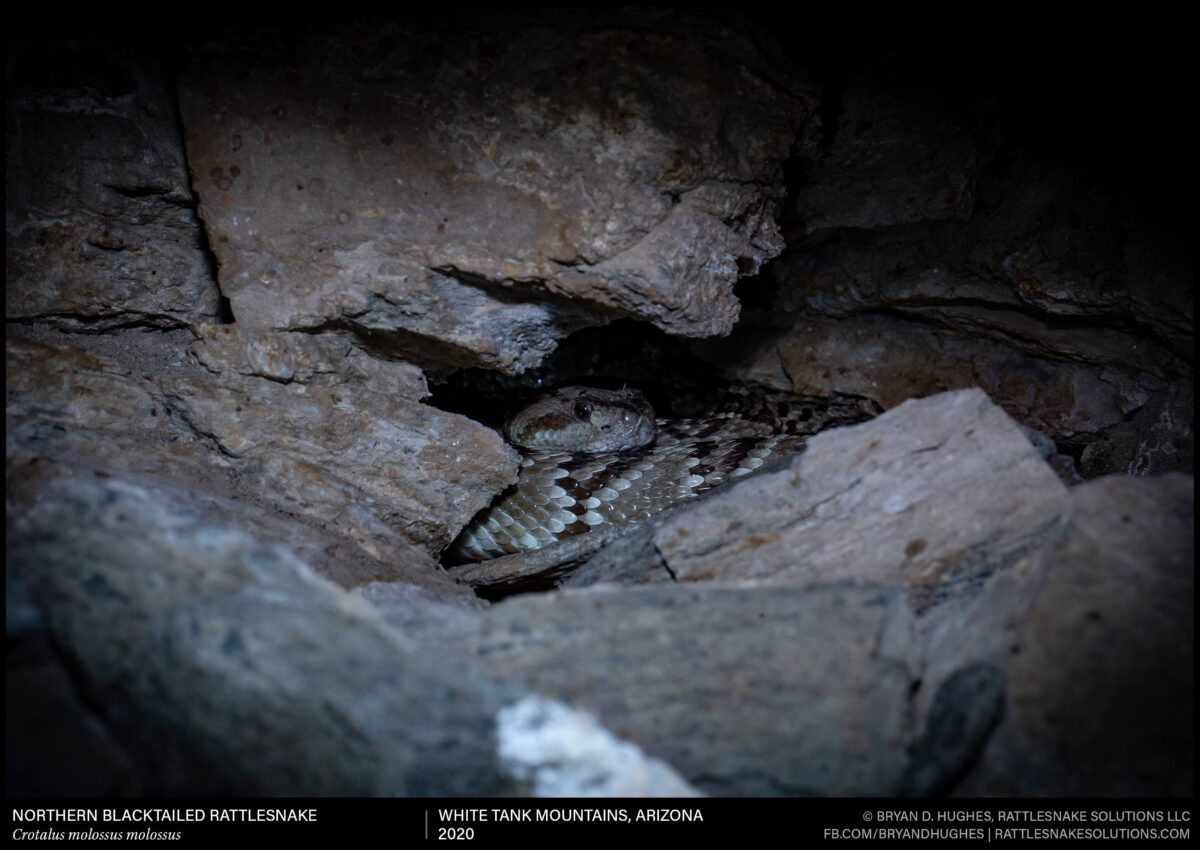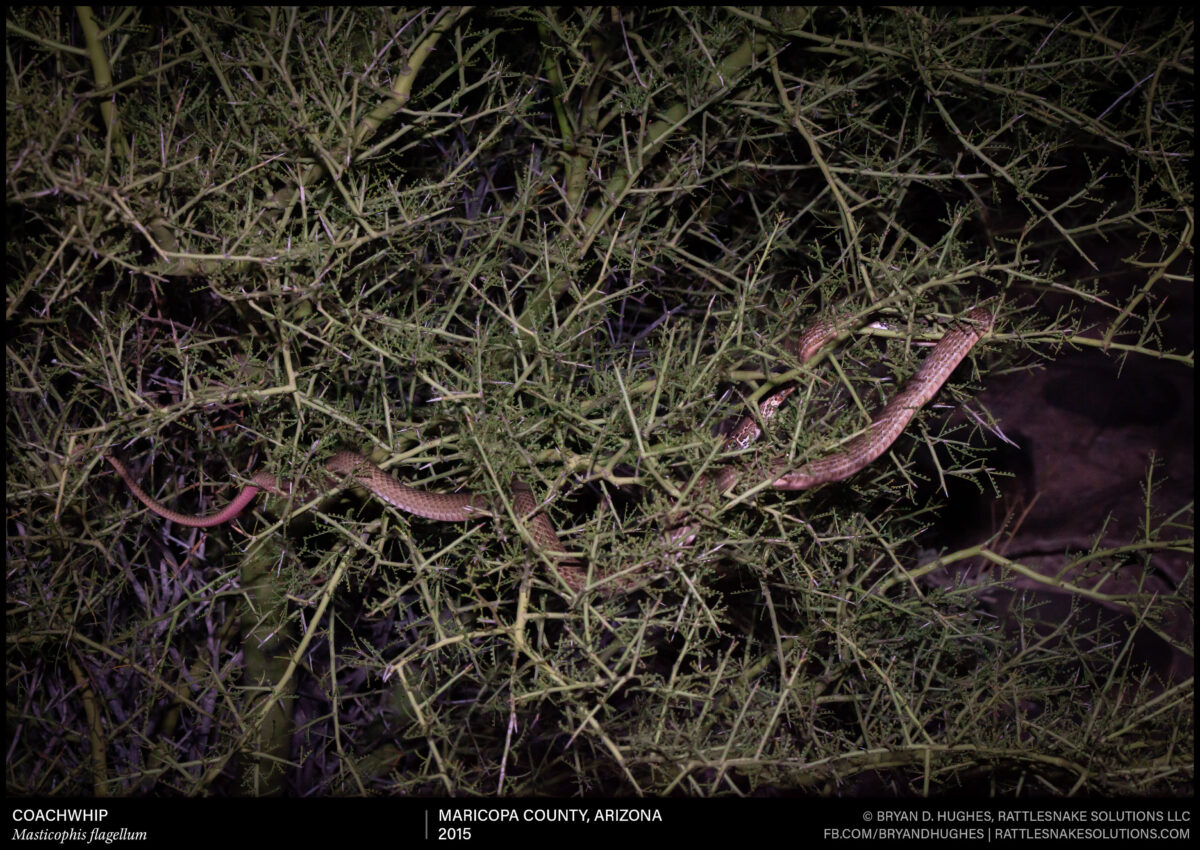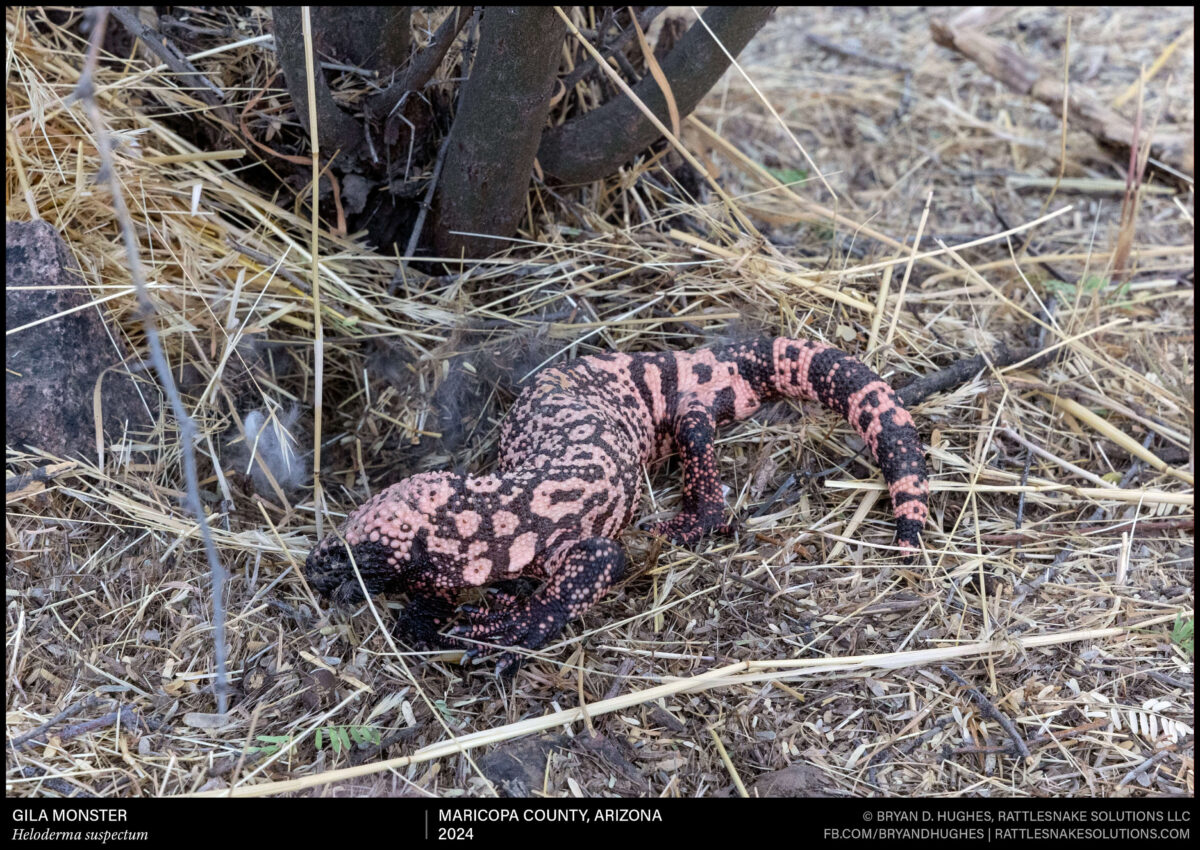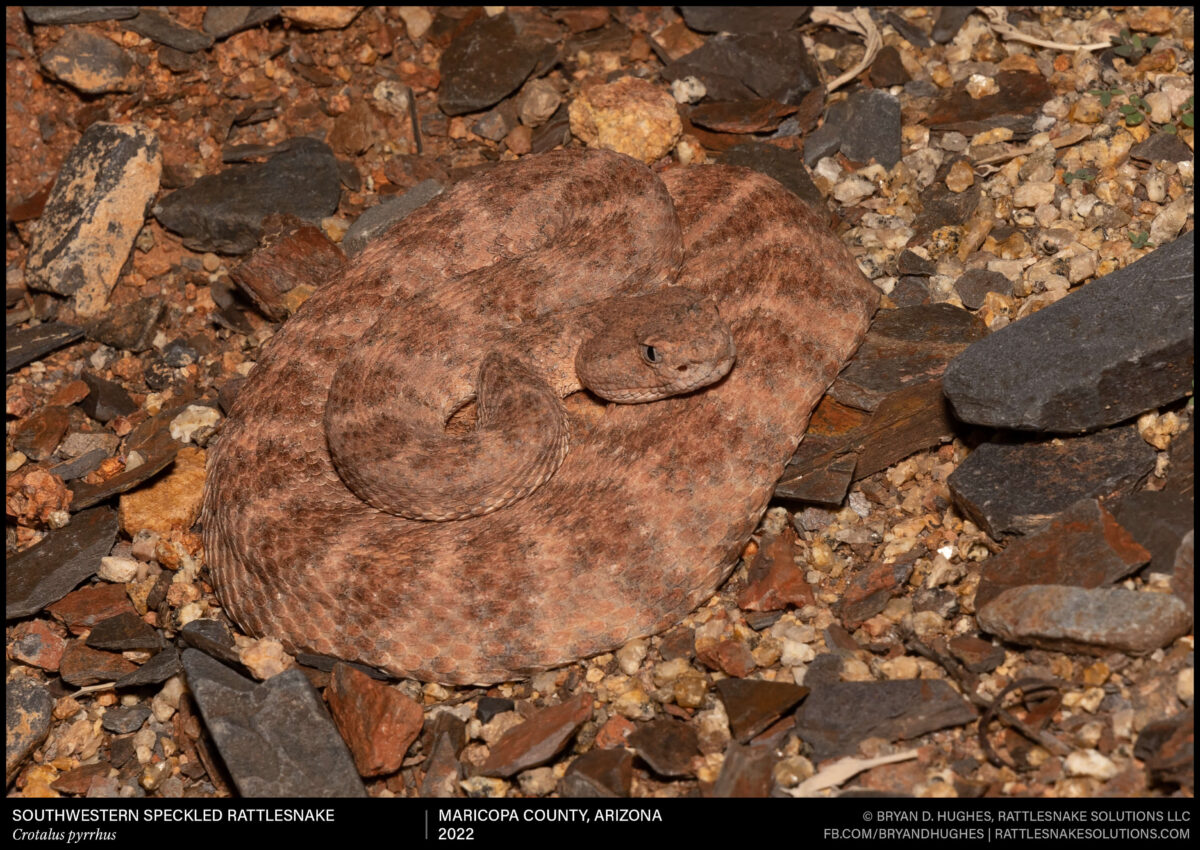A Mojave Rattlesnake from the Phoenix area. These snakes are common in the flatter, creosote and grassland areas of the state. This one obeys the all the ID rules, with much wider white tail bands than black, yellow proximal rattle segment, and a post-ocular stripe that extends back to never intersect with the mouth.
